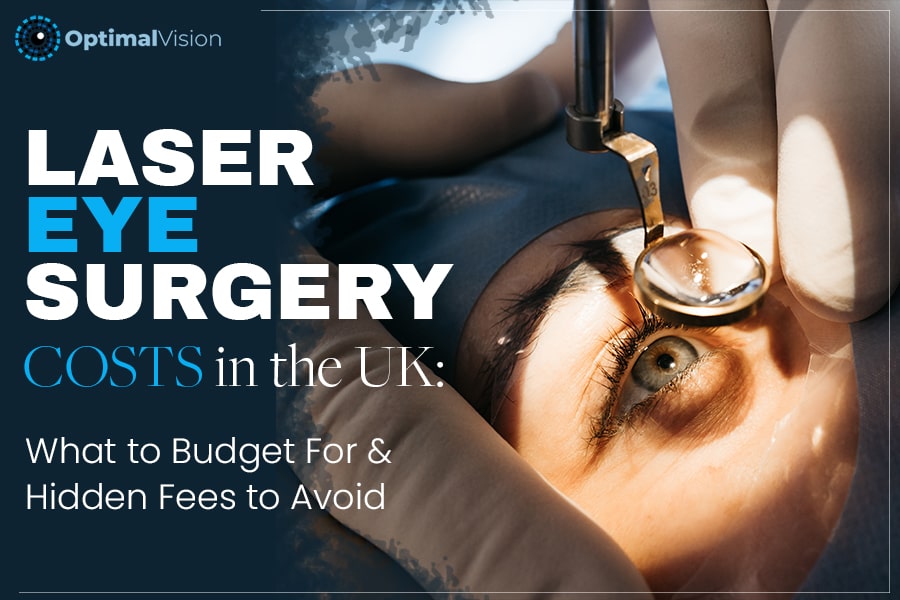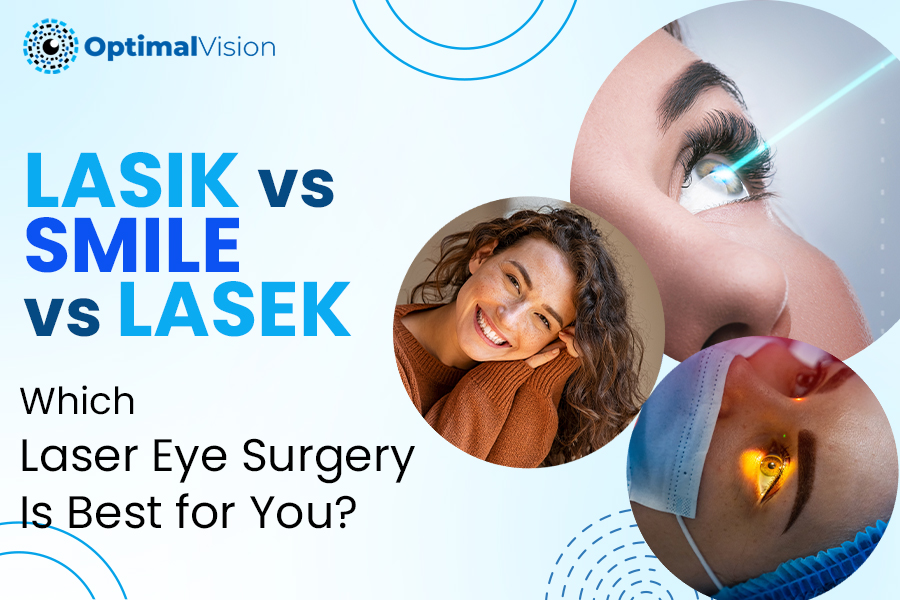Open six days a week - book a consultation with a specialist now - No Hidden Charges, No Pressure, Affordable

Laser eye surgery treatment will change the curvature of front part of the eye called cornea which help the vision to improve similar to contact lens correction. Although this is last for many years some age related changes can happen after many years and small prescription will develop by time, many individuals enjoy good vision for at least 10 to 15 years after laser eye surgery and in fact the age related changes in their eyes are usually small and will never get back to their original higher perscriptions. Like any kind of procedure there is risk, however small and this something that will be discussed with you at your consultation.
Over the most recent 50 years, refractive treatment has evolved significantly and the very first treatment of this type was called radial keratotomy and worked by radial slits being made with a scalpel at the front of the eye so that its shape was changed. This procedure did improve many patient’s vision, but higher rate of complication and fast regression was a concern. From the 1970s through to the 1990s a different kind of laser treatment was introduced, and this worked by shaving a wafer-thin layer from the front part of an eye altering the curvature and improve passage of light into the eye. Making this change allowed for focus to be a lot sharper. When this procedure performed by type of light it was called PRK (photo refractive keratotomy.) However, although very successful but it has long period of healing with associated discomfort as well as higher chances of complication for high prescriptions.
Next, a new technique, (laser assisted in situ keratomileusis) LASIK was introduced which not only help on fast recovery but also reduced the discomfort and pain that the patients experienced as well as was more predictable for higher prescriptions with improvement of vision within few hours post surgery. This technique involved applying laser beam slightly depend in surface of eye or cornea with use of a wafer-thin flap which is repositioned immediatly after laser procedure hence faster recovery.
Photo refractive keratectomy also known as PRK is a successful procedure for correcting vision. It’s still used today although there is a preference to use LASIK because because of fast recovery and reduce post operative discomfort. The results of the two treatments could be considered very similar particularly for low prescription and studies have shown that there is a suggestion that the eyes surface nerve regeneration is faster when a patient has been treated with PRK rather than LASIK.
PRK is preferred method of surgery for candidates with thin cornea or for athletics with regular contact sports and There is the additional benefit with less complications seen during healing, with PRK in some instances. Your surgeon will discuss all the details of the various surgeries plus any complications that may be expected (although rare)when you have your consultation.
It is now possible to correct prescription by inserting a new artificial lens(implant) inside the eye to improve vision. Once this kind of lens is implanted in the eye in front of the iris and the natural lens of the eye is left in place. In a different procedure the natural lens of the eye will be removed and replaced with a lens that can correct both near and distance vision. The Royal College of Ophthalmologists considered this option for candidate above 50 years old, this technique may be preferable than LASIK for candidate who already need reading glasses. When you have your consultation, your consultant will discuss with your which treatment would be best for you.
Every patient who is having laser surgery will have eye drop local anaesthetic to alleviate any pain during the surgery. Although no pain is expected during the procedure, mild pressure sensation experience during the procedure, this is mainly due to the fact that our body has different nerve for pain and presure.this mild pressure is well tolerated with majority of laser patients. It is also quite normal to suffer some irritation or discomfort for a couple of hours after the surgery. if you have PRK you might find your eyes are irritated for about 4 to 5 days or even a bit more as the corneal surface heals. You will be given some eye-drops to use if you do suffer any pain while your eyes are recovering.
Our eyes look like a camera and light should be focus on the back of our eyes or retina for us to see well . The cornea is responsible for majority of bending the light in the correct way so that it hits the right point exactly, on the retina. Some individual have longer or shorter eye ball of different curvature of cornea and hence the image get out of focus on the back of their eyes. With laser surgery it is possible to alter the corneal shape and curvature so that the curve is in the optimal position to enable light to pass to the correct place on the back of your eyes or retina.
In fact, most people will have some astigmatism. Astigmatism describes the situation of an eye that is the shape of a rugby ball rather than a perfect sphere. In a simple word eye has different prescription in different angles. Astigmatism can be treated with LASIK because it is now possible to programme a laser to carry out corneal reshaping, however there are certainly limitations to this.
If a patient has an astigmatism of less than 6.00 dioptres (D) it will be possible to correct that astigmatism with one LASIK treatment. If the astigmatism is higher than this then it is likely correction will be only partial or that the patient may need to have further surgery later on for full correction. Treating astigmatism will also make Lasik treatment more expensive.
Being long sighted means that things that are far away appear clear while things close look as though they are out of focus. Being long sighted means that you have a shortened eyeball, or the corneal curve is not sufficient or possibly the eye’s lens is too thin. Treatment of long sightedness came after the initial short sight laser innovation and if long sightedness is very pronounced, then laser surgery might not be possible, although there are some techniques that might be used to help.
Laser eye surgery is commonly used to treat moderate to low shortsightedness with excellent predictability and safety for right candidate However, your surgeon will explain any treatment that he intends to do fully with you so that you understand what is going to happen. He or she will also discuss side effects with you.
Any procedure or surgery will come with some element of risk. the Royal College of Ophthalmologists have said that complications are seen in fewer than 5% of people who have laser surgery. Complications around the flap that is produced with LASIK therapy is seen in around less than four percent of patients in previous study this has significantly reduced with invent of femtosecond laser for flap production , but it is usually possible to correct these problems with further treatment.
Some patients have had problems with eyes feeling dry for a few months after they've been treated with laser surgery, but the application of artificial teardrops will help. It should be borne in mind that it may be necessary to apply them on a long-term basis. Patients have also complained about a halo or glare effect when they've been driving at night particularly in the immediate period after they have had laser treatment and particularly if the correction or prescription has been higher or they born with large pupil size.
In some very rare instances, there may be some thinning of the wall of the eye which can cause instability in the cornea. Although it is a rare occurrence more surgery or alternately treatment may be necessary to correct this type of complications.
You will have to be over 18 years of age to have a laser procedure and you will also have to have stable prescription. You should have good visual health and good general health. When you see the consultant, he or she will assess the thickness of your cornea and whether it makes you suitable for treatment. For a patient with a very high prescription laser treatment might not be a good option.
Most patients who undergo laser therapy will be off work for only two days or perhaps 5 days K procedures.
Absolutely! Having your eyes checked regularly can flag up any problems before they become too serious so even if you feel your vision is perfect and you can see well it is a very good idea to take the offer of your regular eye examination when it comes up every other year or at an interval suggested by your optician. Visit our website to know more: https://www.optimalvision.co.uk/laser-eye-surgery-london

Laser eye surgery can transform your day-to-day life in as little as 15 minutes, freeing you from glasses or contact lenses. But the big question for most peopl...
08 Oct 2025
Thinking about life without glasses or contact lenses? You’ve likely come across different types of laser eye surgery — the most common being LASIK,...
02 Oct 2025
A Comprehensive Guide LASIK surgery is a life-changing procedure that can free you from the constraints of glasses and contact lenses. At Optimal Vision, we...
13 May 2025
If you wear glasses or contact lenses, you’re all too familiar with the morning struggle. Your alarm rings, and before you can even begin your day, you&rs...
19 Mar 2025
Laser eye surgery has become a popular and effective solution for vision correction, helping millions of people worldwide to reduce or eliminate their dependenc...
25 Aug 2024
Laser eye surgery treatment will change the curvature of front part of the eye called cornea which help the vision to improve similar to contact lens correction...
27 Apr 2021
Everybody likes a bargain, whether that is in the January sales or a getaway at half the price. Saving money is a good feeling. Over the past few years there ha...
16 Mar 2021
Dealing with glasses or contact lenses have daily challenges with its inconvenience, like losing your glasses , heavy feeling over your nose missing them or eve...
17 Jan 2021
Laser eye surgery is a common vision correction, and although many people have undergone this surgery, there are several misconceptions and myths about this pro...
15 Jan 2021
The natural ageing process affects several areas of our lives. It may affect your near vision, making it difficult for you to focus on words while reading. It c...
06 Dec 2020
There are more options than you can count for your laser surgery in London. But when laser eye surgery is concerned it is important to think carefully about you...
19 Mar 2020
A recent study reveals that more than one billion people worldwide need eyeglasses, many of whom do not have access to vision correction. Furthermore, three out...
19 Feb 2020
Lens replacement surgery is a ground-breaking technology. The treatment not only corrects a large range of visual errors but also corrects the problem of catara...
05 Feb 2020
How safe is laser eye surgery? This is one of the most commonly asked questions that come from patients who are about to undergo the surgery. Laser eye surge...
29 Jan 2020
Laser eye surgery proves effective in fixing your vision problems among millions of people around the globe. A large number of these patients have achieved 20/2...
29 Dec 2019
Dr Mani has performed more than 35,000 ophthalmic procedures, including LASIK, LASEK, PRK, Femto Cataract, RLE, Lens ICL and Phakic IOL Surgery

We are recognised by most UK and international medical insurance providers.
Please call us to ask about private healthcare insurance.







